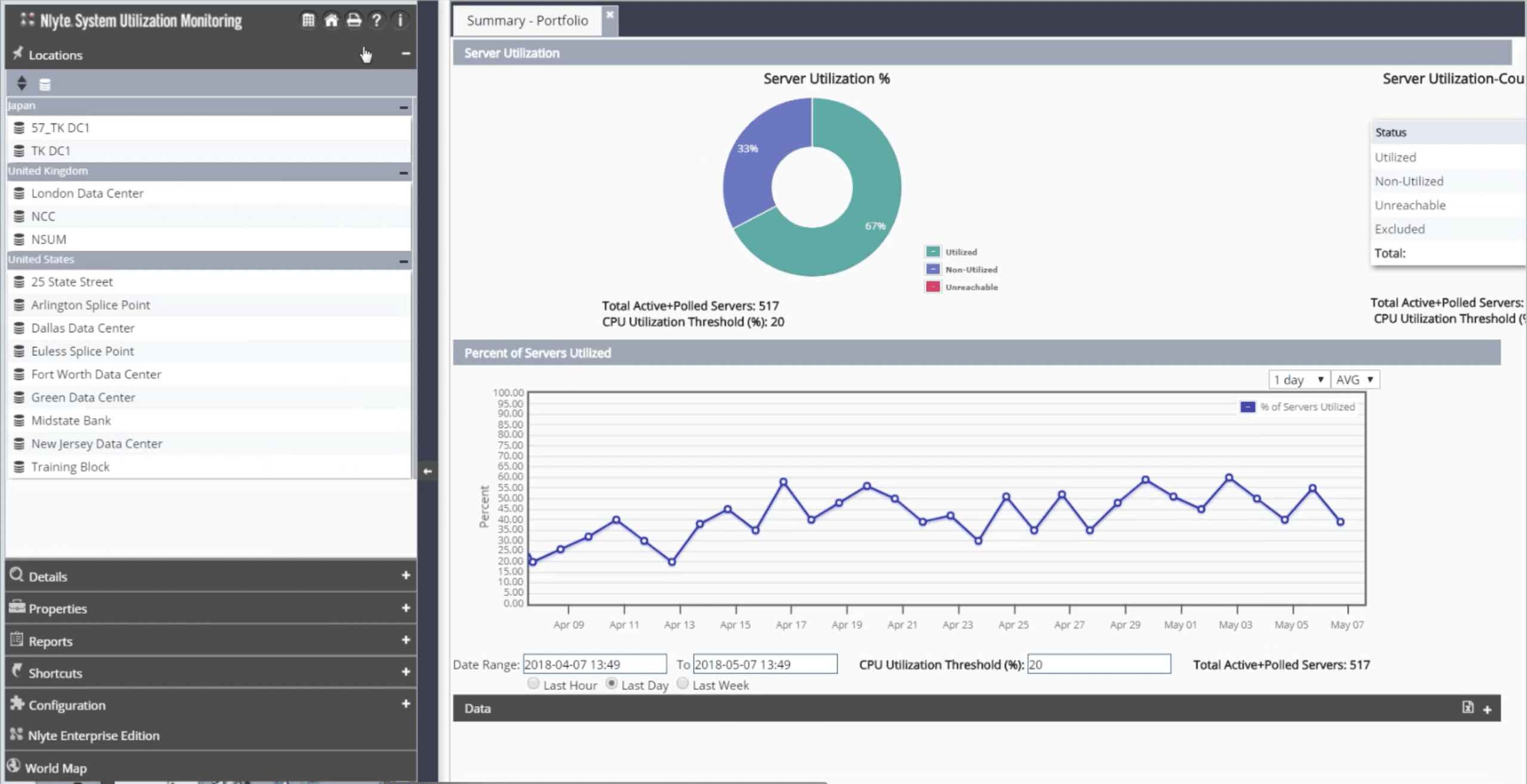Server Utilization Metrics Meets Data Center Monitoring
Published on June 20, 2023,
by
In the dynamic world of data centers, the adage "stagnation breeds obsolescence" holds profound truth. Data center managers are acutely aware that comprehensive visibility into facilities, equipment, and IT assets is not just beneficial but imperative. The advent of Data Center Infrastructure Management (DCIM) software marked a significant leap forward, particularly in enhancing visibility on the facilities side. This game-changer has enabled IT personnel to access critical server CPU utilization metrics, thereby offering a more granular understanding of data center operations.
Taking a stride further in the evolution of DCIM capabilities, Nlyte has introduced a groundbreaking feature that promises to revolutionize how data centers monitor server utilization. Dubbed Nlyte System Utilization Monitoring (N-SUM), this feature is designed to amalgamate server utilization metrics into the comprehensive dashboard displays that data center managers have come to depend on. N-SUM stands out by offering:
- Detailed Monitoring and Reporting: It provides insights into IT asset utilization levels, presenting them as understandable percentages.
- Versatile Dashboard Views: Users can view data center infrastructure utilization on various scales—from a global footprint to local site views to room-level drill-down insights.
- Utilization Insights: N-SUM aids in identifying servers that are either over or underutilized, which is crucial for efficient resource management.
- Direct Navigation: It enables navigation directly to specific, rack-mounted IT assets, enhancing operational efficiency.
A particularly noteworthy feature of N-SUM is its ability to pinpoint servers that aren't being leveraged to their fullest potential. This uncovers opportunities for consolidation and cost savings and aligns with sustainability goals by incorporating CPU metrics into DCIM displays. By joining forces with Nlyte's DCIM solution, N-SUM emerges as an indispensable tool for achieving end-to-end visibility and comprehensive status reporting in data centers.
However, the value of N-SUM extends beyond real-time monitoring. Understanding trending patterns over time is equally crucial for data center managers. N-SUM addresses this by offering a historical view of server usage levels, enabling data center managers to discern future trends. This facilitates structured planning for both growth and consolidation, ensuring that data centers can adapt to changing demands efficiently.
As data centers expand in scale and complexity, the challenge of effectively monitoring space, power, and cooling escalates. System utilization—or the lack thereof—has become a focal point, mainly as enterprises routinely identify "ghost servers" that consume energy without contributing to business functions. These ghost servers, often accounting for upwards of 20% of a data center's resources, represent a significant area for optimization.
In conclusion, the integration of server utilization metrics into data center monitoring, exemplified by Nlyte's N-SUM, is not just an advancement; it's a necessity for modern data centers. Data center managers can optimize system utilization, reduce costs, and support sustainability efforts by harnessing real-time data and historical usage patterns. In the ever-evolving landscape of data center management, tools like N-SUM are leading the way toward more efficient, transparent, and adaptable operations.

Additional Resources
White Paper: Fundamental Measures of Data Center Sustainability
Executive Brief: Climate Risk Disclosures in Data Centers - A Review of the Proposed SEC Guidelines
Executive Brief: Singapore's Data Centre Energy Efficiency Scheme (DCS)
The Criticality of Measuring Server Utilization in Delivering Sustainable Data Centers
